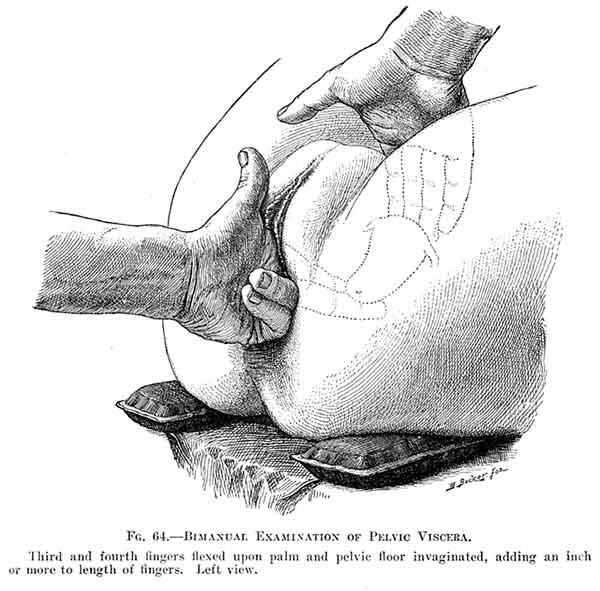



See also Touch but don't look:
"The Touch" and the shame of physical
examination
Dr. Nelson Soucasaux, Brazilian gynecologist
Palpation means touch. Read more about examination of women in an earlier
time and The Touch
 |
The upper fingers feel the main part of the womb (uterine corpus) through the abdominal skin, the lower ones (inside the vagina) touch the cervix, the lower part of the uterus - the neck, which is what cervix means in Latin. On the top sides of the outlined uterus are the Fallopian tubes entering the uterus; these tubes bring the eggs to the uterus. The examiner wears no gloves probably because the gloves of 1928 and before were too thick and inflexible to allow him or her to detect small features. The illustration comes from a book in which author mentions The Touch (French "le toucher"; read more about it here): "In the late eighties [1880s] a group of gynecological youngsters made a shibboleth of the bimanual [two-handed] examination, deciding upon a claimant's status as a gynecologist according as he held it indispensable or not, for the older men almost invariable used only 'le toucher,' the one-handed vaginal examination, and made their diagnoses accordingly. The natural limit of this last group was the vaginal cervix." (Drawing from Howard Kelly, Gynecology, New York,1928. See more from Kelly's book, its last edition, where you can also read about the Johns Hopkins medical illustration department, the first one in the United States, which made many of Kelly's illustrations. Kelly was the first professor of gynecology at Hopkins.) |